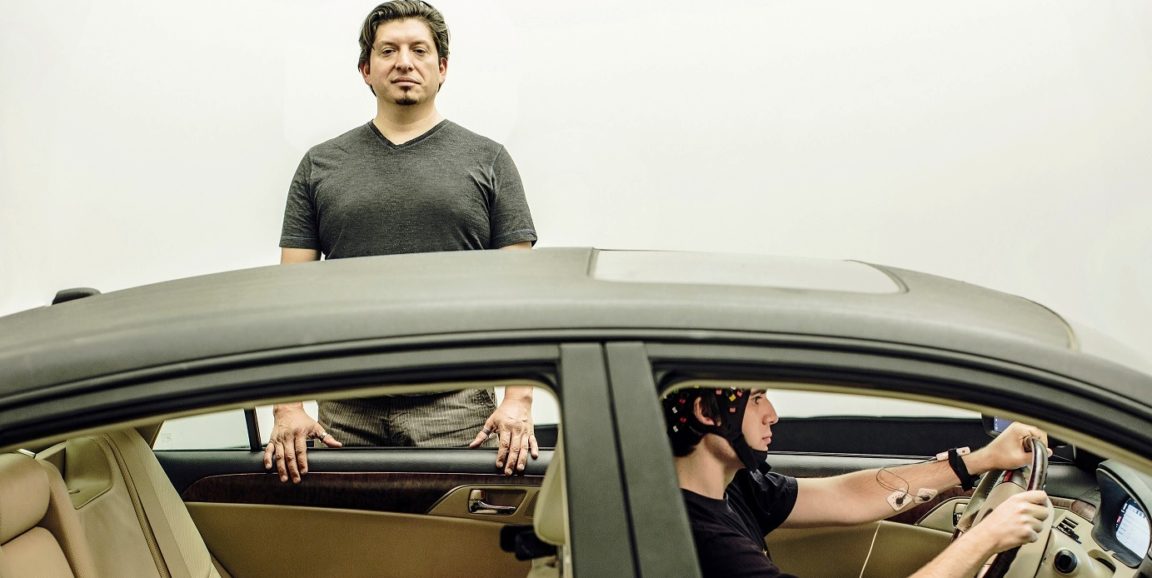Between a gaggle of robots that tamp down stress, a vibrating driver's seat that guides slower breathing, and LED lights that change color to sway mood, scientists at Stanford are hoping to turn the art of mindfulness into a science.
Pablo Paredes, PhD, an instructor in radiology and psychiatry and behavioral sciences at Stanford, leads an effort in his lab rooted in "digital mindfulness," which harnesses technology to create and enhance a positive mental state.
I recently wrote up a Stanford Medicine magazine story on one of Paredes' biggest efforts, which creates mindfulness technologies fit for automobiles. His interventions might have a driver talking out a stressful situation with a therapist-like robot, or — in a driverless vehicle — put passengers in a virtual under water world, swimming with schools of fish and humpback whales. As I explain in the article:
[The] strategy is to transform a notoriously stressful part of the day that holds millions of Americans captive to a bucket seat: the commute. After all, almost 117 million people in the United States spend about an hour a day ferrying themselves to and from work. Why not use that time for a little self-care?
This effort, deemed 'the mindful commute,' aims to passively sense stress and enable people to use their commute time to mold their mental state — like turning the drive home from work into a cool-down or de-stress period.
What sets Paredes and his lab apart isn't the virtual deep-sea excursion (although you'd be hard pressed to find an in-car VR setup like his). It's his focus on biological measurements that convey how the user interacts with the devices. When researching the efficacy of his new technologies, Paredes is careful to track biological parameters that clue him into their stress — things like breathing rate, heart rate, and even the way you grip a steering wheel:
We’re not the first to use lights to sway mood or chatbots to talk to people, but companies working in this vein don’t have the science behind it — that’s what’s missing.
And that, Paredes said, is where his research can make a difference. To have cool technology is great, but what's transformative is knowing if and how digital intervention can curtail stress at a population level.
Photo by Timothy Archibald




